| | | | October 2021 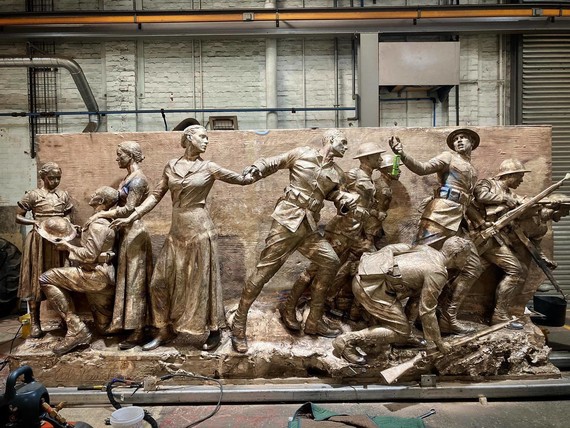 The first section of the central sculpture for the new National World War I Memorial in Washington, DC has completed casting and is now assembled at Pangolin Editions sculpture foundry in the UK. Sculptor Sabin Howard recently completed the clay for the second section (the battle scene) and shipped it to the foundry for casting. Howard has begun sculpting the next section (the cost of war) of the four-part sculpture. The entire work is anticipated to be completed and installed at the National World War I Memorial by 2024. | | Reminder: Join us for "Bells of Peace" 11/11/21 at 11:00 a.m., at the National WWI Memorial, or wherever you are Since the centennial of the World War I Armistice in 2018, the Bells of Peace have been tolled in remembrance at 11am on Veterans Day. The national bell tolling commemorates the World War I Armistice – which happened on November 11, 1918 when the guns fell silent, and bells tolled on the Western Front after four years of brutal combat. Each Veterans Day since 2018, Bells of Peace participants have taken a few moments at the 11th hour local to remember those who served in WWI with a remembrance of a 21-peal bell tolling. Tens of thousands have participated in this ritual including states, cities, municipalities, ships, military installations, churches, schools, veterans' organizations, museums, and individuals. For the first time, this year "Bells of Peace" will remember those who served with a ceremony at the National WWI Memorial in Washington, D.C. Click here to read more, and learn how you can participate in Bells of Peace wherever you are on November 11 -- even if you don't have a bell. Diary of Lost Battalion Soldier from WWI Returning to France 103 Years After 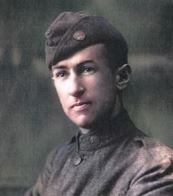 103 years ago, Private James Larney, a soldier from Watertown, New York, went to war as a member of the famed 77th 'Liberty' Division. Assigned to the Headquarters Company of the 308th Infantry Regiment, his commanding officer was Major Charles Whittlesey, who led his men during one of the most epic events of America's WWI – the siege of the 'Lost Battalion'. Through it all, Larney wrote an amazingly complete record in a diary of everything the 308th Infantry Regiment went through. Now, over the Thanksgiving week of 2021, Lost Battalion historian and author Robert J. Laplander will be returning to France with the diary, taking it back to many of the places where it was born under Larney's pen. Click here to read more about the upcoming journey, and learn how the Larney family conceived and approved the momentous trip. |  " It was December of 2019 when I first came upon the letter from 28th Division Captain Ralph C. Crow to Mrs. Ellen Breen of Philadelphia. Like so many of the letters that I've discovered during my now 10-year search for the alumni of Roman Catholic High School who gave their lives in World War I, it was heartbreaking. However, this letter was different, and I was astonished as I read it for it revealed a surprising and unexpected connection related to my search." So begins Chris Gibbons' amazing and moving story of his search for the names of the alumni of his Philadelphia high school alma mater who fell in WWI. Click here to read the entire absorbing and fascinating account. | 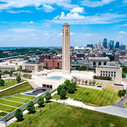 The National WWI Museum and Memorial celebrates 100 years since the Site Dedication that took place on the North lawn on Nov. 1, 1921. The public is invited to the grounds to see what the heart of Kansas City looked like…100 years ago. On Nov. 1, 1921, more than 100,000 people gathered to see the supreme Allied commanders dedicate the site of what is now the National WWI Museum and Memorial. This was the first time in history these five leaders were together in one place. Now visitors can see what the day looked like by touring the grounds of the Museum and Memorial, and scanning 10 QR codes located on signs scattered across the North Lawn (and two at Union Station!). Each QR code will show the viewer a photo or video taken from that exact location 100 years ago. Click here to read more, and learn about this and others Veterans Day activities at the Museum. |  Lois Ullrich was recently rummaging around in her attic when she spotted it - a bundle wrapped with an old blue towel, which her mother had given her years ago and had been promptly relegated to the attic. Lois remembered her mother telling her that it had belonged to her great uncle, Arnold Ullrich, and that he had brought it back with him when he returned home to Mt. Clemens, MI after serving in World War One. Intrigued, she brought the bundle downstairs and opened it for the first time in many years. Inside were two identical steel blades with wooden handles, one bearing a label in her mother's handwriting that read, "Arnold Ullrich Bayonets W. War I." Click here to read the whole story of Arnold's bayonets and the Polar Bear Soldiers of World War I. | 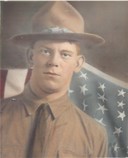 The road to Scott Kent's dissertation topic began several years ago, at the death of his Great Aunt, and the discovery of her older brother Clayton's army trunk from World War I. The trunk contained Clayton's personal effects, his citations, some newspaper clippings, a few photos, and most importantly, several hand written letters sent home to his family. Kent at first thought to use these artifacts to recreate the footsteps of his great-uncle, and "compare his experience with that of thousands of other doughboys, thereby adding his voice to the collective memory of the 'war to end all wars.'" Click here to read more, and learn how an exploration of his great uncle's wartime experiences "morphed into something much larger." | 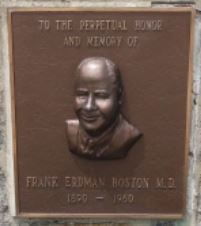 A local Landsdale, PA icon could soon be honored in his former hometown. The Pennsylvania Senate has voted to approve a bill designating North Broad Street as the "Dr. Frank Erdman Boston Memorial Highway." Said state Sen. Bob Mensch, R-24th, who sponsored the bill to rename the road, "The life and accomplishments of Dr. Boston are a testament to what materializes from the best qualities in a human being. His selflessness, respect for life, dedication to his neighbors and unwavering commitment to do good serve as an inspiration for all and are the reasons we should be celebrating his legacy for generations to come," he said. Click here to learn more about Dr. Frank Boston, his service in World War I, and his amazing accomplishments after the war in his native Pennsylvania. | 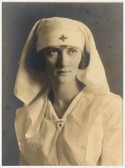 Marjorie Griffin Kay enlisted in the U.S. Navy on October 22, 1918, serving as a Yeoman (F) during World War I. Being a pioneer in the service of women in the American military is quite an accomplishment, but for Marjorie, this was but one on a long and colorful list of professional accomplishments, including Red Cross nurse, actress, model, singer...well, click here to read her whole fascinating story, and learn how (did I forget to mention?) she was also a pioneer in plastic surgery. | 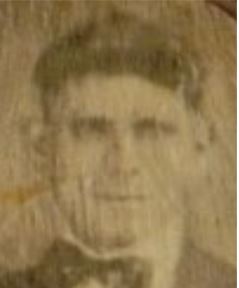 Carmelo A. Roda was born in Reggio, Calabria, Italy in 1896. At age 17, Roda traveled to the U.S. alone, arriving at Ellis Island on Aug. 1, 1913. He settled in Stamford, CT, and less than five years later was fighting in the U.S. Army during World War I while still an Italian citizen. He was severely wounded in action on July 19, 1918, and received a Purple Heart. On Sunday, November 7, 2021 Roda will become the latest recipient of the Veteran Street Sign Honor in Darien, CT. Click here to read more about this recognition of Carmelo Roda's active service during wartime and his community involvement in the Town of Darien upon return from his duties during World War I. |  In 1921, Major George S. Patton Jr. held an important role during ceremonies for America's World War I Unknown Soldier. The man who would become an iconic general, known for commanding victorious armies in World War II, was then the commander of the 3rd Cavalry Regiment's 3rd Cavalry Squadron. On November 9, 1921, Patton helped escort the Unknown Soldier's casket from the USS Olympia to the U.S. Capitol, where the Unknown would lie in state for two days. On November 11, the day of the Unknown's burial ceremony, he marched in the procession that escorted the casket to Arlington National Cemetery. Click here to read more, and learn how Patton and his unit participated in the ceremonies for the first Unknown. | 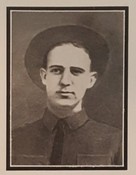 A man is only missing if he is forgotten. Our Doughboy MIA this month is PFC James G. Mason. James Griffing Mason was born 10 December 1897 in Dublin, Georgia. The son of James D. and Cassie G. Mason, he was the youngest of three children. He was one of the first from Dublin to enlist in the 'Macon Volunteers' for Border service on 20 June, 1916 into Company B, 2nd Georgia National Guard. Upon the unit's return following the US declaration of war, they were sent to the newly formed Camp Gordon to be federalized in August, 1917 as Company B of the 151st Machine Gun Battalion, 42nd 'Rainbow' Division. A conscientious and popular soldier, Private Mason was soon promoted to Private First Class. The 42nd went to France in November, 1917 and was in the thick of it almost from the beginning, eventually seeing 264 days of combat. It was on 29 July, 1918, that PFC Mason was killed in action near Villers Sur Fere (Sergy) during the drive from Chateau Thierry to the Vesle River. He was 20 years old. While little is known of his case at this time, there is evidence that the temporary cemetery he was buried in contained several bodies buried without markers. PFC Mason may have been one. There is a private memorial to him in a family cemetery at Dublin, Georgia, and a military provided marker at Detrick Cemetery at Shenandoah County, Virginia. Want to help shed some light on PFC Mason's case? Consider making a donation to Doughboy MIA at www.usww1cc.org/mia. It takes only a moment and your tax deductible contribution can be as large as you want, or as small as $10.00 on our 'Ten for Them' program. Your contribution helps us make a full accounting of all 4,423 US MIA's from WWI, and keeps these lost men from being forgotten. Make your tax deductible donation now, with our thanks. A man is only missing if he is forgotten. | Merchandise from the Official
Doughboy Foundation WWI Store - A Doughboy.shop exclusive!
- High quality, dual-layer, machine washable fabric
- Outer: 100% Cotton jersey knit
- Inner: Polyester 135gsm with Anti-Microbial protection
- Adjustable elastic ear straps for a comfortable fit
- Flexible wire frame over the nose for secure fit
- Width: 9.5" / 24cm x Height: 6" /15.5cm
- Screen printed poppy design "Remember Them" inscription
- One size – fits most adults
Proceeds from the sale of these masks will help build the new National World War I Memorial in Washington, DC. This and many other items are available as Official Merchandise of the Doughboy Foundation. | | | | 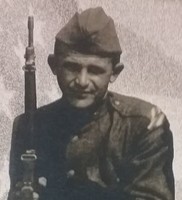 Submitted by: George Carter {Grandson} My Grandfather, George Koenig, was very proud of his U.S. Army service in World War I as part of the American Expeditionary Force. (Note: Most of this information is from the personal diary that he kept while in the Army. Some of his notes are difficult to read or decipher, so this summary is a best effort supplemented by his official U.S. Army Discharge and Enlistment records, as well as the history of the U.S. Army 3rd Division, troopship rosters, newspaper and other historical references.) He joined the Army on June 24, 1918 at the age of 25 from his home state of Minnesota and, after completing basic training, was soon shipped overseas. He arrived in Le Harve, France on October 4, 1918 and was then sent to Camp Hunt in the Southwest of France. He was stationed at Camp Hunt until November 11, 1918 (Armistice Day). Beginning on November 11, his unit traversed France from west to east through Bordeaux, Orleans, Tours, St. Dizier, Troys, Tronville, and Rombach near the German border, arriving on November 21, 1918.
|  | | | |


No comments:
Post a Comment